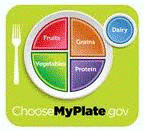Nutrition and Health Sciences, Department of

Department of Nutrition and Health Sciences: Dissertations, Theses, and Student Research
First Advisor
Janos Zempleni
Second Advisor
Soonkyu Chung
Third Advisor
Jiri Adamec
Date of this Version
Fall 11-28-2018
Document Type
Thesis
Citation
Aguilar-Lozano, A (2018). Concentrations of Purine Metabolites are Elevated in Fluids from Adults and Infants and in Livers from Mice Fed Diets Depleted of Bovine Milk Exosomes and their RNA Cargos. M.S. thesis, University of Nebraska.
Abstract
Since miRNAs discovery, evidence keeps accumulating on their role in human physiology for homeostasis and implications during disease development. Upon the discovery that miRNAs could be encapsulated in exosomes and provide protection, evidence keeps accumulating on the possibility for miRNAs to be transferred between distant cells and elicit gene expression changes, and clinical trials are being developed to identify miRNAs in body fluids that could predict disease outcomes based on miRNA encapsulation in exosomes making them stable in body fluids. Recently, studies have shown that dietary miRNAs encapsulated in exosomes can be absorbed in mice and humans, and on the other hand, milk consumption has been associated with lower uric acid concentrations and distinct benefits for human health, therefore the aims of this work were to determine whether milk exosome and RNA-depleted (ERD) and exosome and RNA-sufficient (ERS) diets could alter the concentrations of purine metabolites in mouse livers, and to determine whether diets depleted of bovine milk alter the plasma concentration and urine excretion of purine metabolites in adults and infants, respectively. Effects upon ERD diet were observed, hepatic purine metabolites in ERD fed mice were significantly higher compared to ERD controls. Additionally, plasma concentrations and urine excretion of purine metabolites were significantly higher in dairy avoiders and in infants fed soy milk, and finally purine hepatic gene expression in mice was significantly different between ERD and ERS. Comprehensively, diets depleted of bovine milk exosomes and RNA cargos caused increases in hepatic purine metabolites in mice, and in plasma and urine from adults and infants compared to exosome-sufficient controls. These findings are important since purines play a role in intermediary metabolism and cell signaling, therefore there is a possible link between milk benefits and dietary exosomes and their miRNA cargo transfer. Further research will need to address the underlying mechanisms that drive the purine concentration and enzyme gene expression changes upon ERD diets.
Advisor: Janos Zempleni


Comments
A thesis Presented to the Faculty of The Graduate College at the University of Nebraska In Partial Fulfillment of Requirements for the Degree of Master of Science, Major: Nutrition, Under the Supervision of Professor Janos Zempleni. Lincoln, Nebraska: November, 2018.
Copyright (c) 2018 Ana Gabriela Aguilar Lozano